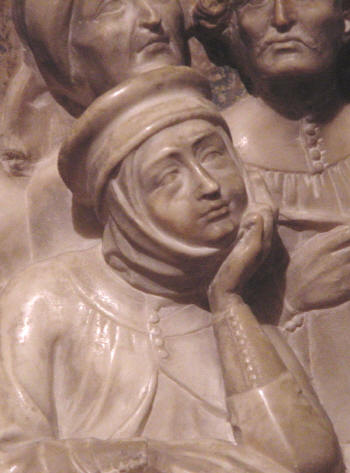Outline of Mid-Term Essay

|
Outline of Mid-Term Essay |
|
I. Describe the structure of the "ecclesia" in early Christian communities. How did early Christian communities establish norms (100 A.D. to 600 A.D.)?
1. The Greek and Roman Domus
A. Evolution of the office of bishop (Monarchical Bishop)
2. Handbooks in the first three centuries: Didaché etc.
3. Councils in third centuries
B. Cyprian and the pope
4. Councils of Elvira and Nicaea could be treated here or in Section II
5. Papal Decretals
II. Describe the relationship of the papacy, the emperor, and canon law in the period from 100 A.D. and 600 A.D. Discuss the canonical norms of marriage in Justinian's Corpus iuris civilis.
1. Conversion of Constantine
2. Structure of Church after 312 AD; Bishop of Rome adopts the imperial rescript
3. Church and State in the Roman World
4. Councils: Elvira and Nicaea (examples)
5. Legislation of Emperors for the Church
6. Justinian's Corpus Iuris Civilis (examples)
7. Marriage law in Justinian (examples)
III. Discuss the differences and similarities between Greek and Latin canon law between 500 A.D. and 1100.
1. Papal Decretals (examples) (this topic could have been treated in Section I or Section II)
2. Latin Collections from Dionysius to Hibernensis
A. Sources and Structures of Latin Collections
3. Greek Collections
B. Sources and Structures of Greek Collections
4. Significance for the difference in Latin and Greek canon law for the history of the Church
IV. Christianity spread slowly in Northern Europe. Discuss canonical collections of the 8th and 9th centuries: their origins and contents.
1. Charlemagne
A. Dionysiana-Hadriana
B. Capitularies (examples)
2. Pseudo-Isidore
3. Importance of Pseudo-Isidore for canon law and the papacy
Couple of points for the final: Some papers had far too many spelling mistakes. I did not substract for spelling for the mid-term. I will for the final. Three spelling mistakes: half grade lower. Please learn the difference between "which" and "that." I do not substract for grammar but would prefer good grammar. Be more careful of capitalization. Church, for example, is capitalized when you refer to the whole Church, rather than a local church. Middle Ages. Ancient World. Directions are always capitalized when referring to a specific geographical place. One of the more idiotic distinctions made by the self-appointed guardians of the English language is that directions are not capitalized when it simply means a direction: "Let's drive north."